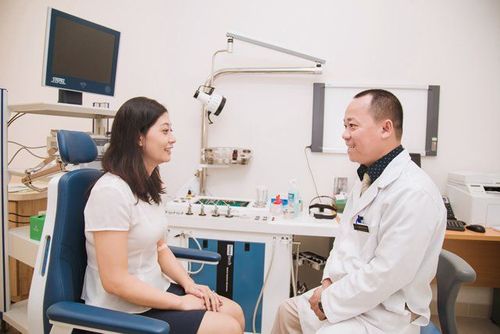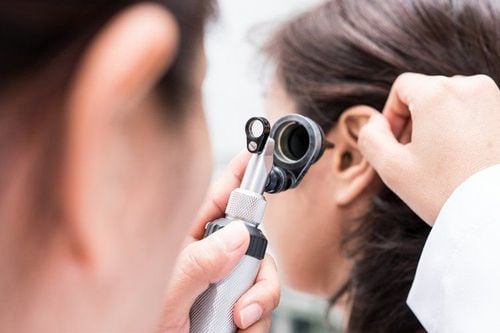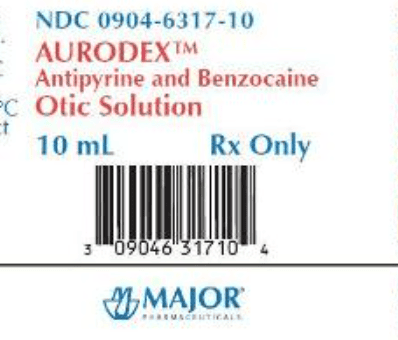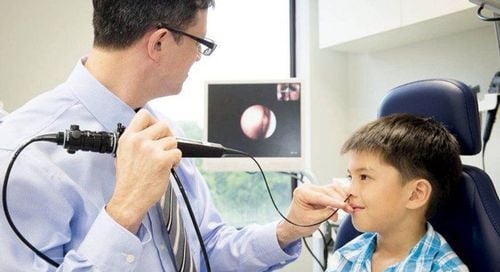This is an automatically translated article.
Ear examination is a simple test to help diagnose ear diseases in a preliminary way before otoscopy is indicated in ear problems to help diagnose the cause and provide appropriate treatment. So how to check the ear? Does it cause pain?1. Ear examination helps diagnose ear diseases
A home ear exam is a procedure that examines the ear canal and eardrum using an otoscope. An otoscope is a hand-held instrument consisting of a lamp, a magnifying glass, and a funnel-shaped viewing device with a narrow end called an otoscope.Ear examination is a simple, non-invasive procedure, so there is absolutely no pain or discomfort for the patient.
The purpose of an ear exam is to screen for ear problems in case of hearing loss, ear pain, discharge, clots, foreign objects in the ear to detect diseases in the ear canal, eardrum and middle ear. . These problems may include infection, excessive earwax, otitis media, foreign body, perforated eardrum for preliminary evaluation prior to performing ENT.
Indication of ear examination:
Routine ear examination may be performed; Children who are fussy, have unexplained fevers, and are suspected of having an ear infection should also have an ear exam to diagnose the disease. ; To screen for causes of hearing loss in infants and young children; Find the cause of ear pain, feeling of pressure or fullness in the ear, or hearing loss; To check for excess wax or foreign body buildup in the ear canal; Find the location of an ear infection that could be the outer ear canal, otitis media; Evaluate the effectiveness of treatment for an ear problem.

Khám tai tại nhà là thủ thuật kiểm tra lỗ tai và màng nhĩ bằng cách sử dụng dụng cụ ống soi tai
2. How to examine the ear?
Prepare the Clari Lights; Otoscopes of all sizes; Otoscope; Cotton swabs, alcohol lamps, cotton swabs; Medicine tray. Examination position: The doctor and the patient sit facing each other, at eye level, if it is a child, someone should hold the child's forehead.Examination steps Wear lights, adjust lights; Observing the rim of the ear, the pinna, the posterior ear groove, the mastoid region behind the ear to detect the accumulation of fluid in the ear canal, ear shingles, otitis externa, skin cancer of the auricle,... Press the pain points: Pain point in front of the ear: cap, pull the earlobe up, pull the earlobe down to detect diseases of the ear canal such as: inflammation of the ear canal, boils in the ear canal; The pain point behind the ear includes the pain point that is located horizontally with the upper wall of the ear canal close to the groove behind the ear; Cylindrical point; Posterior mastoid point. These pain points are often painful in diseases of the mastoid bone such as: acute mastoiditis, chronic inflammatory mastoiditis.
Examination of the outer ear canal: Pull the earlobe up and back, shine the clar light into the inflamed ear canal with boils, otitis externa, polyps, foreign bodies in the external ear canal, fungal infections of the outer ear canal. Examination of the eardrum:

Thông qua quan sát màng nhĩ, bác sĩ có thể phát hiện các bệnh như thủng màng nhĩ, viêm màng nhĩ, viêm tai giữa,...
Toyenbee test: the patient closes the nose, closes the mouth and swallows saliva, if the patient hears a sound in the ear, the eustachian tube is open. Valsava maneuver: ask the patient to close the nose, close the mouth and blow hard to inflate both cheeks, if the patient hears a sound in the ear, the eustachian tube is open. Politzer test: the patient takes a sip of water, covers one nostril, the doctor uses a large rubber balloon to pump air into the other nose while the patient swallows, if the patient hears a sound in the ear, it is a faucet. Eustache pine. Ear examination is a simple procedure, simple to perform, easy to observe and detect some ear diseases, to help preliminary assessment and order more tests to evaluate the disease accurately and treat promptly.
Vinmec International General Hospital is a high-quality medical facility in Vietnam with a team of highly qualified medical professionals, well-trained, domestic and foreign, and experienced.
A system of modern and advanced medical equipment, possessing many of the best machines in the world, helping to detect many difficult and dangerous diseases in a short time, supporting the diagnosis and treatment of doctors the most effective. The hospital space is designed according to 5-star hotel standards, giving patients comfort, friendliness and peace of mind.
Please dial HOTLINE for more information or register for an appointment HERE. Download MyVinmec app to make appointments faster and to manage your bookings easily.













